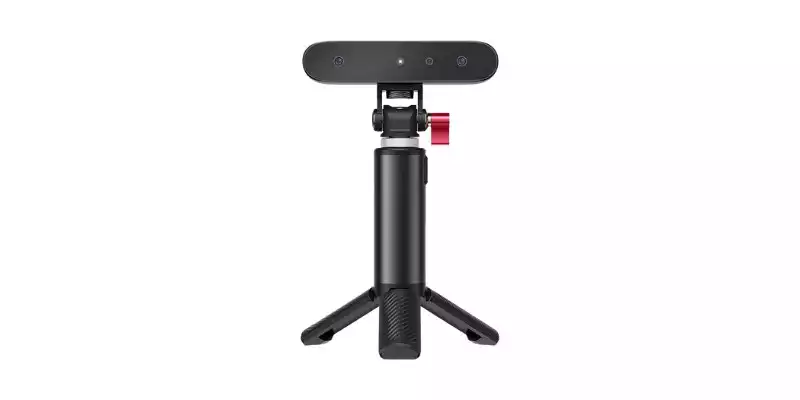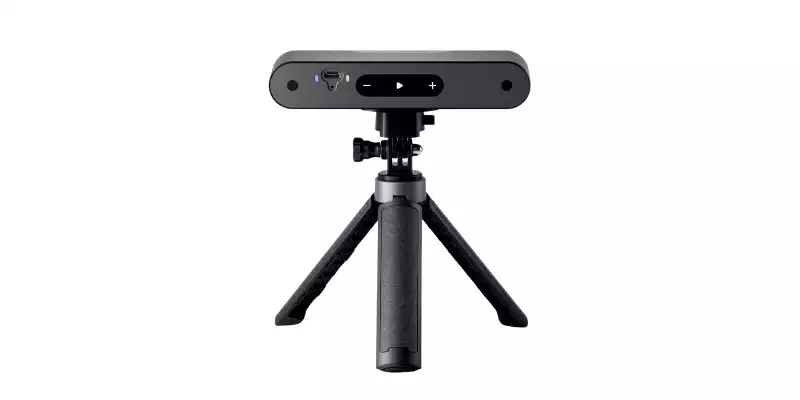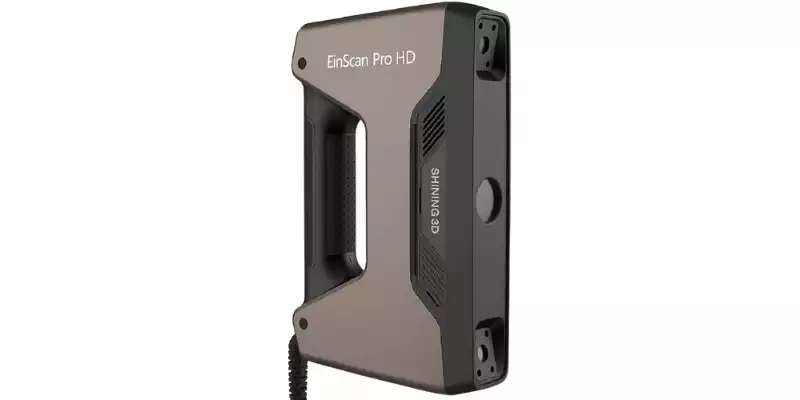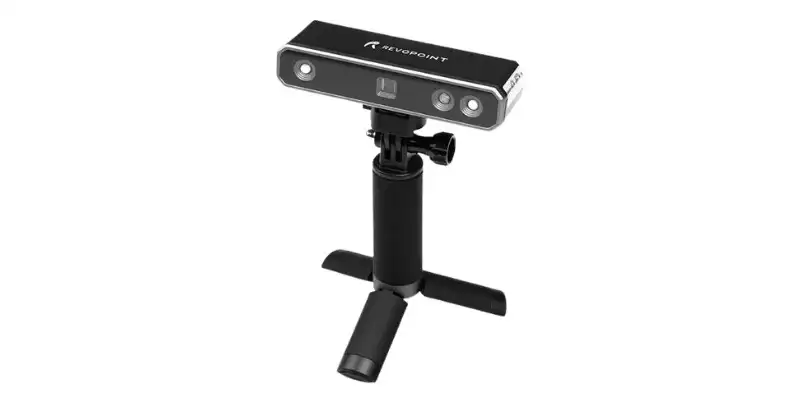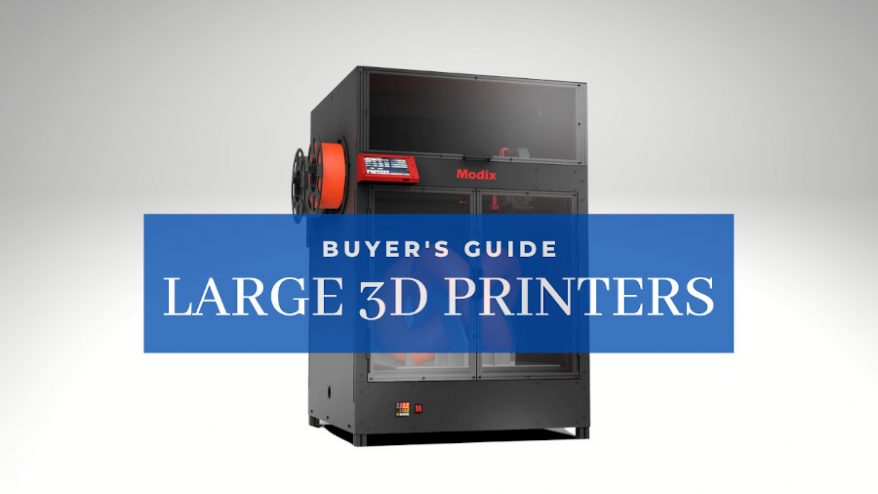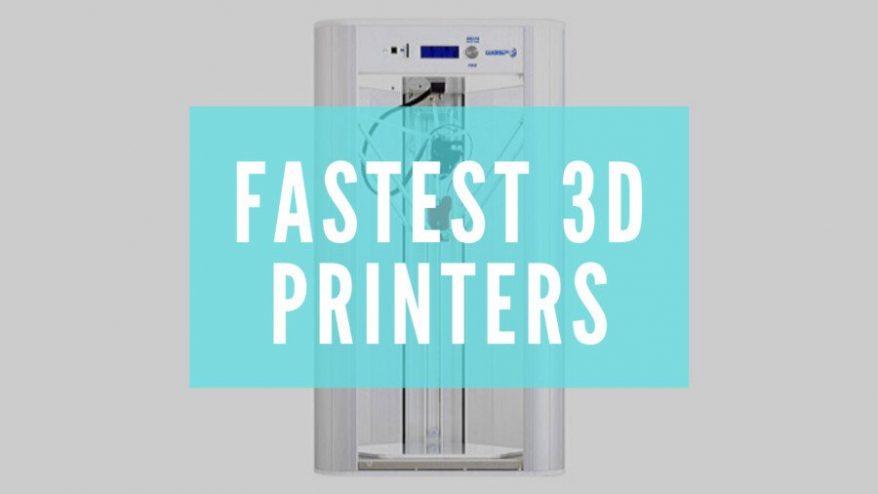Here’s our top picks of the best 3D scanners in 2024, with our in-depth comparisons and breakdown:
The best 3D scanner overall right now is the Revopoint POP 3.
In our hands-on tests, the POP 3 outperformed all other 3D scanners in its price range, and overall it’s one of the most portable, versatile, and accurate 3D scanners under $1,000.
For a super budget scanner, you can go either for the older Revopoint POP 2, or the Creality CR Scan Ferret.
|
$329.00
|
$659
|
$8,000-$10,000
|
|
|
|
|
|
4.2
|
4.7
|
4.6
|
|
0.1 mm
|
0.05 mm
|
Up to 0.4 mm
|
|
0.016 mm
|
0.05 mm
|
0.2 - 3 mm
|
|
30 FPS
|
12-18 FPS
|
Up to 30 FPS
|
|
50 mm x 50 mm x 50 mm
|
20 mm x 20 mm x 20 mm
|
100 mm x 100 mm x 100 mm
|
|
560 x 820 @ 700 mm
|
225 mm x 125 mm
|
209 x 160 mm minimum; 310 x 240 mm maximum
|
|
150 mm - 700 mm
|
150 mm - 400 mm
|
510 mm
|
|
|
|
|
For a higher quality scanner:
- For around $1,000 the top pick is the Shining 3D Einstar.
- The EinScan SP is the best in the $2,000 range.
- And the EinScan Pro HD is the best in the $5K-$10K range.
We have separated our reviews into three main price categories:
- Budget 3D scanners (Under $1,000)
- Professional 3D scanners ($1,000 to $10,000)
- Industrial 3D scanners ($10,000+)
Full Comparison
| 3D Scanner Brand & Name | Accuracy | Point Distance Resolution | Scan Speed | Single Capture Range | Where to buy and where has the best price |
|---|---|---|---|---|---|
| Revopoint POP 3 | 0.05 mm | 0.05 mm | 12-18 FPS | 225 mm x 125 mm | Revopoint here |
| CR-Scan Ferret | 0.1 mm | 0.016 mm | 30 FPS | 560 x 820 @ 700 mm | Creality Store here |
| SOL 3D scanner by Scan Dimension | up to 0.1 mm | N/A | 10 min in Turbo mode, 20 min normally | N/A | Amazon here |
| Matter & Form V2 | within 0.1 mm | N/A | up to 65 seconds | N/A | Amazon here |
| Revopoint MINI | 0.05 mm | 0.02 mm | 10 FPS | 40 x 50 @ 100 mm minimum; 118 x 100 @ 200 mm maximum | Revopoint here |
| Shining 3D EinScan SE | within 0.1 mm for single shots | N/A | under 8 seconds | 200 x 150 mm | Amazon here |
| Shining 3D EinScan Pro HD | Up to 0.4 mm | 0.2 – 3 mm | Up to 30 FPS | 209 x 160 mm minimum; 310 x 240 mm maximum | Dynamism Store here |
| Scantech iReal M3 | 0.1 mm | 0.1 mm | 60 FPS | 580 x 550 mm | iReal 3D Site |
| Artec EVA | up to 0.1 mm + 0.3mm/m | up to 0.2 mm | up to 16fps | N/A | |
| Scantech SIMSCAN | up to 0.020 mm | up to 0.025 mm | N/A | up to 410 x 400 mm | Scantech site |
| Scantech KSCAN | N/A | 0.010 mm | 1,350,000 measurements/second | 1440 x 860 mm | Scantech site |
Budget 3D Scanners (Under $1,000)
3DSourced is reader-supported. When you buy through links on our site, we may earn an affiliate commission. Learn more
1. Revopoint POP 3: Top Pick Overall
- Price: Check latest price at Revopoint here
- Precision: 0.05 mm
- Point Distance Resolution: 0.05 mm
- Scan Speed: 12-18 FPS
- Minimum Scan Volume: 20 mm x 20 mm x 20 mm
- Single Capture Range: 225 mm x 125 mm
- Working Distance: 150 mm – 400 mm
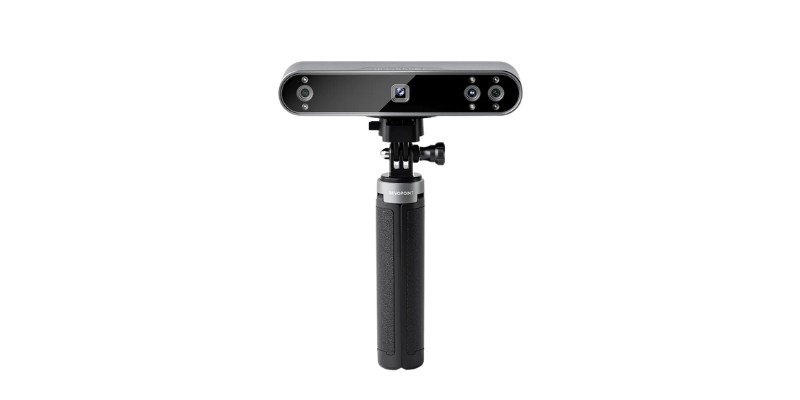
Pros
Suitable for a range of applications
Refined, user-friendly workflow
Affordable
Cons
Not suitable for small, intricate, and detailed objects
The Revopoint POP 3 is an upgrade on the excellent POP 2, our previous budget pick based on our hands-on POP 2 test. It balances performance and price to bring quality 3D scanning capabilities to lower budget users.
For the low price, it has a 0.05 mm single-frame precision, 0.05 mm point distance resolution, full-color scanning, and up to 18 FPS capture, all powered by a dual-camera infrared structured light setup. These specifics make it a versatile general-purpose scanner useful for 3D printing modeling, digital media, conservation, design, and AR/VR.

However, professionals and businesses will find that the performance of the POP 3 is somewhat lacking for precise, low-tolerance applications. This focus on catering to many applications means that the POP 3 tends to tail off when it comes to small objects with intricate details such as jewelry. For that, you’re better served elsewhere with a dedicated small object 3D scanner like the Revopoint MINI.
Baked into the Revopoint POP 3 is ease of use, with a sleek, refined workflow from the actual scanning process all the way to seamless WiFI 6-enabled data transfer then processing and editing a scan in the Revo Scan software. You also get two modes, handheld and static, with all the accessories needed to juggle both depending on your needs.
Virtually every aspect of the POP 2 has been improved for the POP 3, including capture speed, brightness, and color capture, so if you want the best Revopoint has to offer the choice is clear.

However, if you’re after a budget alternative, the POP 2 is a steal, especially if you’re 3D scanning for a hobby. And, if you want to scan smaller objects, such as jewelry, then go with the Revopoint MINI.
Scanner Features:
Single-frame precision of up to 0.05mm
Fast scanning speeds of up to 18 fps
An RGB camera with 30% larger aperture
Better color accuracy
9-axis IMU for a better tracking and frame stitching
Single capture range: 244 x 180mm
2. CR-Scan Ferret: Best Budget 3D Scanner For 3D Printing
- Price: Check latest price at Creality here
- Accuracy: 0.1 mm
- Point Distance Resolution: 0.016 mm
- Scan Speed: 30 FPS
- Minimum Scan Volume: 50 mm x 50 mm x 50 mm
- Single Capture Range: 560 x 820 @ 700 mm
- Working Distance: 150 mm – 700 mm
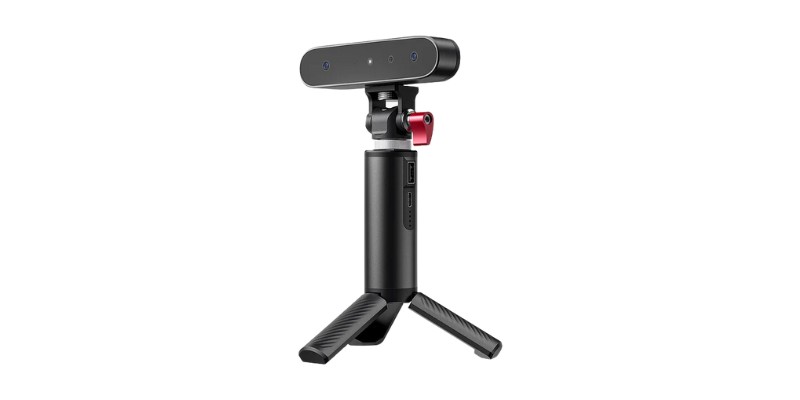
Pros
One of the cheapest usable 3D scanners on the market
Excellent for 3D printing and other basic modeling
Fast scan speed
Cons
Not suitable for professional applications
An upgrade on the CR-Scan 01, the CR-Scan Ferret is Creality’s newest affordable 3D scanner for 3D printing enthusiasts. The CR-Scan Ferret is the real deal, with an affordable $329 price tag for hobbyists on a tighter budget.
Despite the price, it’s pretty versatile. The CR-Scan Ferret has a high-accuracy mode to capture small and medium objects like minis and figurines, powered by a 0.1 mm accuracy and 0.16 mm precision for improved dimensional accuracy.
There’s also the wide-range mode, with a roomy 560 x 820 mm single capture range. This is useful for scanning medium to large objects such as statues, furniture, and body scans. If there’s something in the real world you want to 3D print, the CR-Scan Ferret can stitch it into a 3D model.
However, compared to pricier alternatives like the Revopoint POP 3, there’s a noticeable drop in scan quality, and the CR-Scan Ferret’s scan positioning can be a little difficult to master. But, for the price, the quality is higher than what you’d expect, with full-color scanning, a compact handheld design, included tripod, speedy 30 FPS capture, and bright sunlight outdoor scanning capabilities.
If you want a better scanner, consider upgrading to the Scan Ferret Pro. It has Wi-Fi 6 transfers, a slightly crisper 0.1 precision, and anti-shake technology to improve scan results. The Ferret Pro is a solid option for dabbling in AR, e-commerce, basic design, and digital archiving.
3. SOL 3D Scanner by Scan Dimension
- 3D scanner price: Check latest price at Amazon here
- Accuracy: up to 0.1 mm
- Scan volume: up to 170 x 170 mm
- Scan speed: 10 min in Turbo mode, 20 min normally
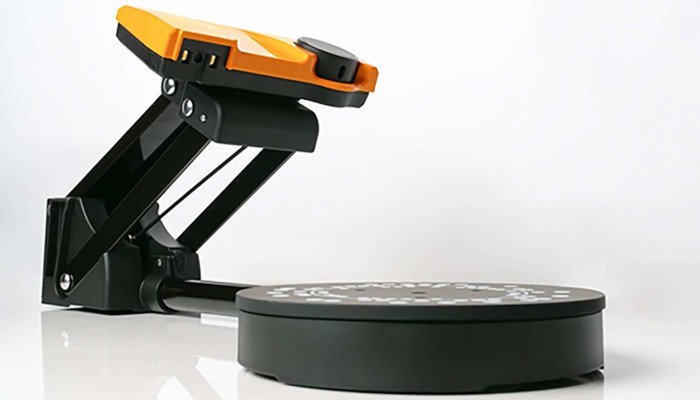
Pros
Portable: Weighing in at just 7 pounds, making it easy to carry around.
Two modes: Near mode and Far mode, allow users to scan objects of different sizes.
Easy to use software.
Can be used for both business and home purposes.
Cons
Has trouble scanning white and black objects.
SOL is a desktop laser scanner designed for scanning small yet detailed items, with good accuracy for the price.
The actual scanner itself weighs just 7 pounds, and can scan objects that weigh up to 2kg. This light weight makes it a perfect portable 3D scanner if you’re on the move.
It has two different modes depending on what you’re scanning:
- Near mode: for scanning objects of up to 100 mm in diameter and 100 mm in height.
- Far mode: for scanning objects up to 170 mm in diameter and 170 mm in height.
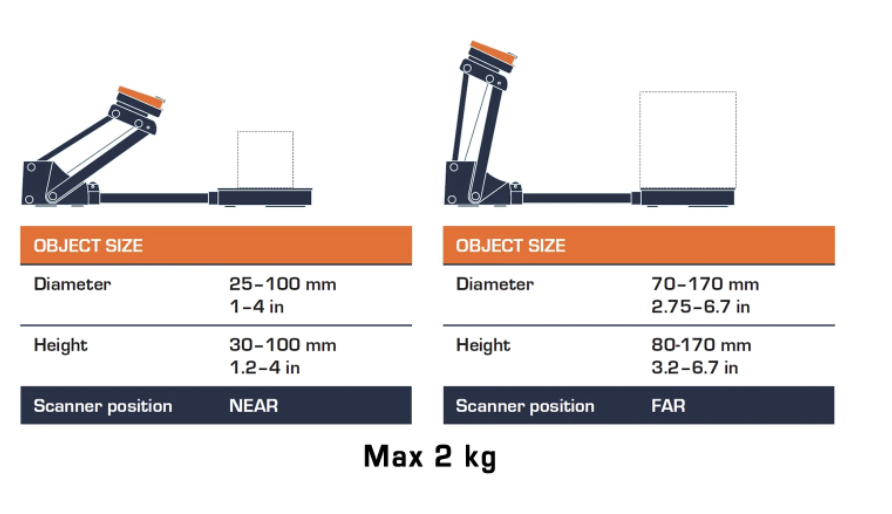
The SOL boasts an accuracy of around 0.1 mm, extremely good for the price range. You scan objects with their included SOL 3D software, and can then easily export your scans as OBJ or STL files and import them into a 3D slicer for 3D printing.
Danish company Scan Dimension promotes this impressive 3D visualizer not only for makers or hobbyists, but also for entrepreneurs. They sell the SOL 3D scanning camera as a way for entrepreneurs to show their products off with a 360-degree view, with easy ways to share these scans on Facebook.
Additionally, Scan Dimension say the scanner is also perfectly suited for education, for teaching students STEM education through scanning and editing structures.
Overall, it’s well suited as both a 3D scanner for businesses and as a home 3D scanner for hobbyists.
4. Matter and Form V2 MFS1V2: Portable Scanner Under $1,000
- 3D scanner cost: Check latest price at Amazon here / Matterhackers here
- Scan volume: 250 x 180 mm
- Accuracy: within 0.1 mm
- Scan speed: up to 65 seconds
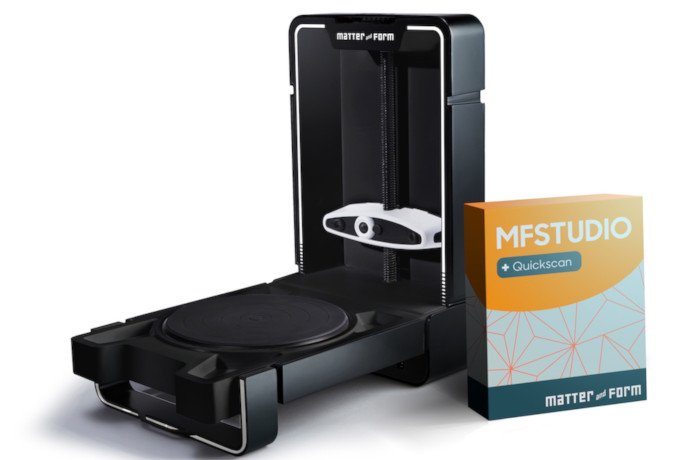
Pros
Easy to use and straightforward to operate.
Fast scanning with the quickscan feature.
Designed to fold up, making it very portable.
Cons
Has trouble picking up very fine detail.
Lighting can be tough to get right.
The Matter & Form V2 is an updated version of the original M&F desktop 3D scanner. It uses 2 lasers and an HD-CMOS sensor to produce high-resolution, full-color 3D scans. A main selling point is its portability – all you have to do is fold it up and transport it.
The Matter & Form V2 scans objects in sizes up to 25 cm tall and 18 cm in diameter. It’s compatible with every major OS, so Mac users needn’t worry. It’s accurate up to around 0.1mm, and is easily connectable to your computer through USB to transfer over your scans.
However, it is only a stationary scanner, and can’t be used as a handheld body or face scanner like the Revopoint POP 3 for example can.
For editing scans, the Matter and Form scanner comes with specialized Mfstudio, and Quickscan which boosts scan speed to up to 65 seconds. You can then export the STL files and print them with your 3D printer.
5. Revopoint MINI: Best For Jewelry & Small Objects
- Price: Check latest price at Revopoint here
- Accuracy: 0.05 mm
- Point Distance Resolution: 0.02 mm
- Scan Speed: 10 FPS
- Minimum Scan Volume: 10 mm x 10 mm x 10 mm
- Single Capture Range: 40 x 50 @ 100 mm minimum; 118 x 100 @ 200 mm maximum
- Working Distance: 100 – 200 mm
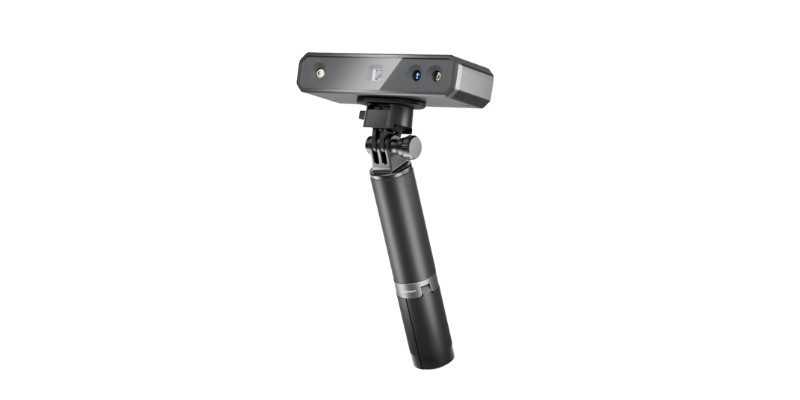
Pros
Designed exclusively to scan small, intricate objects like jewelry and tabletop miniatures
High-quality, dimensional accurate scan results
Excellent specs for the price
Cons
Not suitable for medium or large-sized objects
The Revopoint MINI is designed exclusively for scanning small, detail-rich, and intricate objects. Applications include jewelry replication, design, and repair, scanning miniatures for 3D printing, reverse engineering small mechanical parts, and conservation of small artifacts and other historical objects.
This ability to capture small objects with excellent dimensional accuracy and true-to-life details is down to a combination of a 0.5 mm single-frame accuracy, 0.2 mm point distance resolution, and 0.2 mm single-frame precision.
These are specs rarely seen in this price range. It can scan objects as small as 10 x 10 x 10 mm, for example, small rings and gemstones. When I tested the Revopoint POP 2, and the POP 3, neither could scan objects this small with any kind of detail. This makes the MINI all the more impressive.
However, the Revopoint MINI performs poorly when scanning medium-sized objects, so I still recommend a more general scanner like the POP 3 if you want to scan different-sized objects.
If you’re a small business, jeweler, or enthusiast with a decent budget dabbling in areas where the Revopoint MINI shines, I recommend it as one of the best 3D scanners for small objects and jewelry.
Professional 3D Scanners ($1,000 to $10,000)
6. Shining 3D EinScan SE: Best Under $2,000
- Price: Check latest price at Amazon here / Dynamism here
- Scan accuracy: within 0.1 mm for single shots
- Scan range: single scan = 200 x 150 mm, maximum scan range = 700 x 700 mm
- Scan speed: a single shot is under 8 seconds
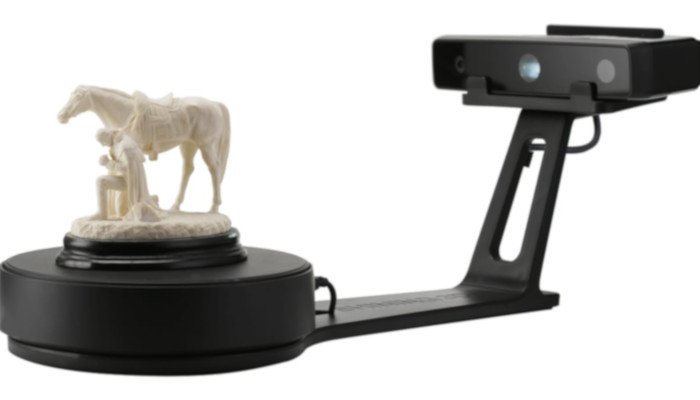
Pros
Highly accurate: Single shot accuracy is within 0.1mm.
Fast scanning with its 8-second scanning time and 2-minute 360-degree automatic scan mode.
Cons
Difficult to scan in brightly light areas.
Shining 3D have made a name for themselves in the medium-range 3D scanning sector, with cheaper options such as the EinScan-SE as well as more expensive scanners like the EinScan Pro 2X Plus.
The EinScan SE is one of the best 3D object scanners in its price range. It scans in around 8 seconds (versus 4 seconds for the EinScan SP) and can complete a whole 360-degree scan in its Automatic Scan mode in around 2 minutes.
It can scan objects up to around 200 mm wide and 150 mm tall, with a single shot accuracy of within 0.1 mm — making it one of the best 3D scanners under $2000. For a fixed scan without the turntable, max scan volume increases up to 700 x 700 mm.
Overall, this 3D model scanner is accurate, reliable, and makes it easy to quickly scan stationary objects and 3D print them with ease. The EinScan SP — described in more detail further in this guide — is more precise, but costs more. Therefore, it’s a matter of your budget and how important this additional quality is for you personally.
7. Shining 3D EinScan Pro HD: Best Under $10,000
- Price: Check latest price at Dynamism here
- Accuracy: Up to 0.4 mm
- Point Distance Resolution: 0.2 – 3 mm
- Scan Speed: Up to 30 FPS
- Minimum Scan Volume: 100 mm x 100 mm x 100 mm
- Single Capture Range: 209 x 160 mm minimum; 310 x 240 mm maximum
- Working Distance: 510 mm
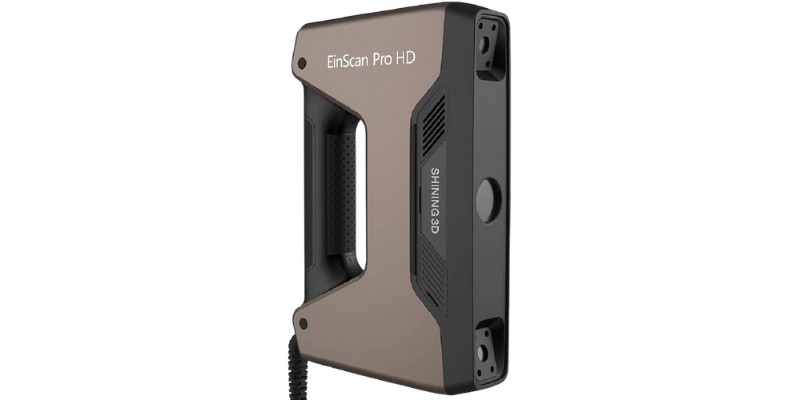
Pros
Can scan all types of objects
Superb, detail-rich scans suitable for even the most demanding applications
Handheld and fixed modes
Cons
Expensive
The EinScan Pro HD is a professional industrial-grade 3D scanner that offers both handheld and static modes to capture high-resolution 3D models of objects of all sizes.
Whether you’re looking to reverse engineer a car part or scan an ornate historical artifact, the EinScan Pro HD produces superb quality scans that are both accurate and richly detailed. For example, scanning a human face delivers a 3D model that captures every wrinkle, blemish, and subtle feature, something that simply isn’t possible on low-cost scanners.
It achieves this by balancing a 0.4 mm accuracy and 0.2 point distance resolution, which means highly accurate scans regardless of scan volume and the target object’s size. Capture speed is also impressive given the level of detail on offer, with up to 30 FPS in handheld mode and less than 0.5 seconds per single frame in Fixed Scan Mode.
Thanks to some clever positioning work, the EinScan Pro HD makes scanning easy, allowing the user to move both the scanner and object during the scanning process without any negative effect on the model’s quality. It also includes lighting projection hardware and software to scan dark and reflective surfaces, typically an area where many scanners struggle.
All this versatility makes the EinScan Pro HD suitable for a wide range of applications including reverse engineering, demanding and low tolerance design, conservation, AR/VR, digital archiving, rapid prototyping, architecture, and much more. For businesses looking for a no-compromises option and with the budget to spare, it’s hard to go wrong with EinScan Pro HD.
8. Scantech 3D iReal M3
- Price: $6,980 – Check here on iReal 3D
- Accuracy: 0.1 mm
- Resolution: 0.1 mm
- Max Field of View: 580 x 550 mm
- Scanning Distance: 280 – 1000 mm
- Scanning Rate: 60 FPS
- Technology: Dual-infrared lasers (parallel laser & structured light)
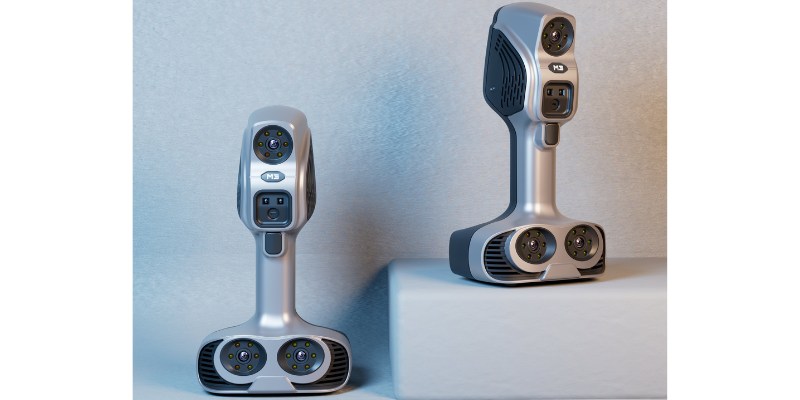
Pros
Dual light sources
Fast and accurate data acquisition in wide applications (recommended object size: 0.05-4 m)
Strong material adaptability (can scan dark, shiny, and reflective surfaces).
Cons
There are more accurate scanners out there.
The iReal M3 is a new professional-grade 3D scanner that uses 2 invisible infrared light sources – parallel laser, and structured light. This allows for fast and accurate data scanning across various applications, whether you’re scanning humans or objects, or whether you’re inside, or outside in natural light.
The iReal M3 balances high-quality scanning at a cost-effective price. Using new scanning modes harnessing 7 infrared parallel laser lines, you can scan dark, shiny, and reflective mechanical parts without needing to treat the surface.
With a resolution of up to 0.1 mm, the scanner can reconstruct high-precision geometric structures and capture fine details of edges, easily handling scanning tasks for objects over 5cm.
The infrared VCSEL structured light is designed for human body scanning and art, and invokes a wide field of view and flexible working distance.
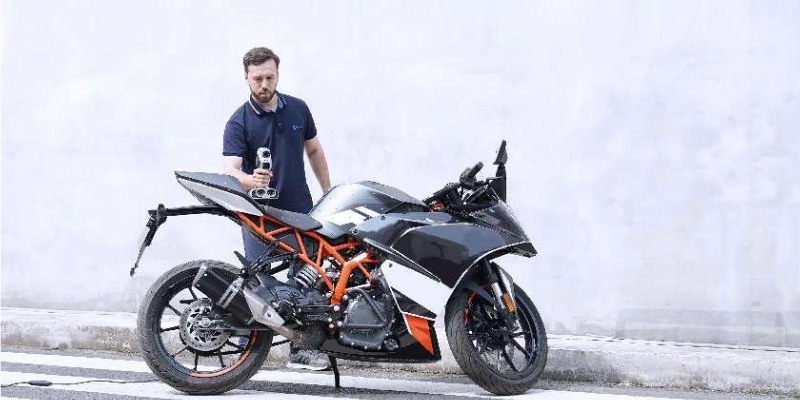
Beyond this, you can also do:
- Full body or medium and large-sized object scanning
- Algorithmic optimization on human body scanning
- Invisible-light scanning
- Human hair 3D scanning
- Markers-free scanning for objects featuring continuous, non-repetitive, and richly varied geometric/textural features
- Hybrid alignment modes
Although priced at $6,980, iReal M3 falls roughly in the affordable range and is a versatile tool suited for industrial design, art design, medical design, human body digitization, etc.
9. Shining 3D EinScan SP: Best in the $2,000 Range
- Price: Check latest price at Amazon here / Dynamism here
- Scan range: single scan = 200 x 150 mm, max scan range = 1200mm³
- Accuracy: within 0.05 mm for single shots
- Speed: single shot speed of under 4 seconds
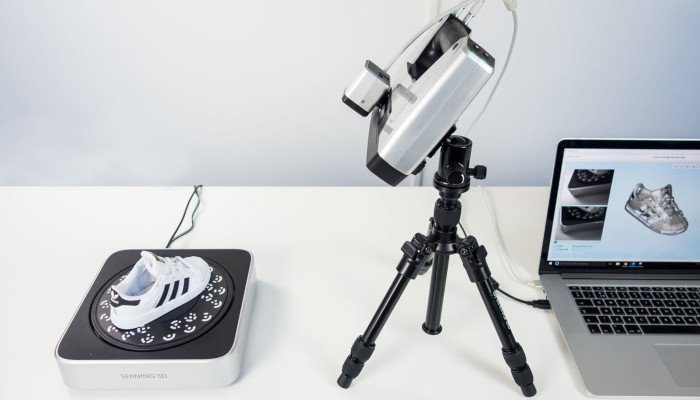
Pros
Can complete a scan In 4 seconds, half the time of its predecessors.
Fast full object scanning.
Competitive scan quality despite its lower cost.
Cons
A scanning spray is needed to scan dark and shiny areas.
While using auto-mode, it has a fairly restricted scan volume.
The EinScan SP is a mid-range stationary 3D scanner. It costs more than the EinScan SE, but this comes with better accuracy of up to 0.05 mm (vs the EinScan SE’s 0.1 mm), and scans in half the time (4s vs 8s).
To save you time: it’s double the price, offers double the accuracy, and scans in half the time.
The scanner uses white light scanning technologies to make very accurate scans of objects as small as 30 x 30 x 30 mm. This is ideal for intricate object scanning such as of jewelry and small figurines.
Full objects are typically scanned in less than a minute, and images in less than four seconds.
The 0.05mm scan quality is excellent, and it is competitive with scanner costing far more than the $2,000 price range it sells for. Overall, it’s a great and versatile mid-range professional 3D scanner.
Industrial 3D Scanners ($10,000+)
10. Artec EVA: Powerful Handheld 3D Scanner
- Price: $19,800
- Accuracy: up to 0.1 mm + 0.3mm/m
- Resolution: up to 0.2 mm
- Speed: captures up to 16fps in HD and full-color
- Working distance: 0.4m – 1m
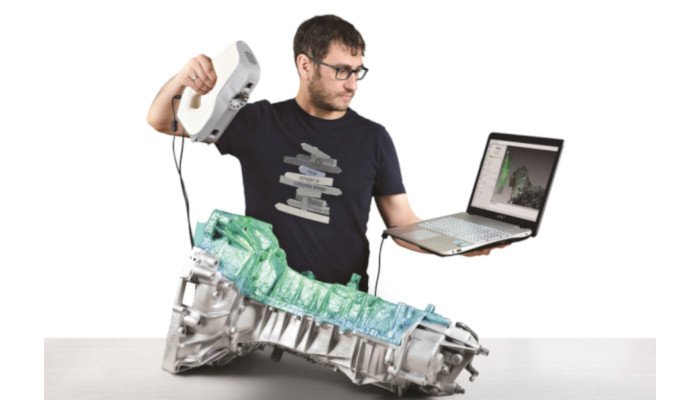
Pros
High precision.
Uses structured light scanning technology, making it possible to scan objects other 3D scanners will find difficult.
Scans a wide range of objects.
Cons
Very expensive as it is a high-end 3D scanner.
The Artec Eva is one of the world’s most popular industrial 3D scanners. The Eva is a handheld, industrial 3D object scanner, and an excellent solution for medium-sized objects ranging from motorcycle wheels to car exhaust systems, human busts, and facial close-ups.
Light, quick, and versatile, Artec Eva captures precise measurements in high resolution, while structured light scanning technology makes the scanner safe to use in any situation. Even difficult-to-scan surfaces such as black or shiny surfaces are effectively captured by Eva.
Ideal for use in industries including product design, heritage preservation, healthcare, and reverse engineering, this market leader can accurately scan full-color objects at a range of up to 100cm with color and texture, making it a great solution for fast and accurate 3D models.
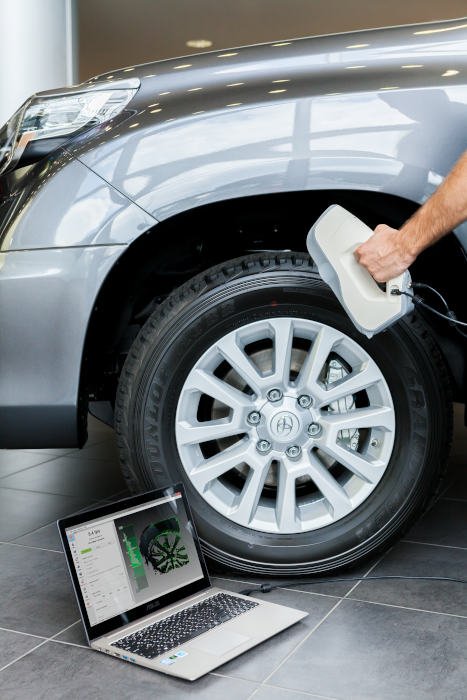
11. Scantech SIMSCAN: Hand-Sized Portable 3D Scanner
- Accuracy: up to 0.020 mm
- Resolution: up to 0.025 mm
- Scanning area: up to 410 x 400 mm
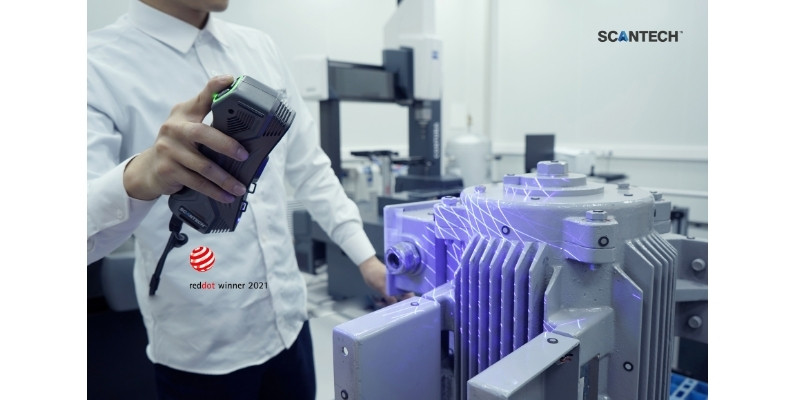
Pros
Designed for both beginners and professionals.
Lightweight.
Sturdy and durable.
Cons
The software could be more intuitive.
Scantech’s SIMSCAN consists of two sets of industrial black & white cameras, a laser projector with 30 laser lines, and a set of multifunctional buttons. Its high-quality components ensure fast and stable 3D scanning.
It features three scanning modes: ultra-fast, hyperfine, and deep hole scanning optimized for different scanning situations. With its intelligent auxiliary lights, it can even scan darkly lit objects.
Powered by a robust algorithm, SIMSCAN’s measurement rate can be up to 2.02 million measurements/s with an accuracy of up to 0.020 mm. It has a field of view of up to 410 x 400 mm.
With a net weight of 570g, SIMSCAN can be among the top list of the most lightweight and portable 3D scanners in the market. It is designed for both beginners and professionals to conduct 3D scanning regardless of ambient conditions. Thanks to its compact size and portability, SIMSCAN enables on-site and efficient 3D scanning, and it suits well for scanning hard-to-reach areas.
Made from aerospace-grade aluminum alloy, Scantech’s SIMSCAN scanner is sturdy and durable and performs well in heat dissipation. Its material ensures a prolonged use of the 3D scanner. With an anti-slip shell and a hand strap, you can orient this scanner in any way you choose to suit your 3D scanning needs.
12. Scantech KSCAN-Magic: Industrial Handheld 3D Scanner
- Resolution: 0.010 mm
- Scanning rate: 1,350,000 measurements/second
- Scanning area: 1440 x 860 mm
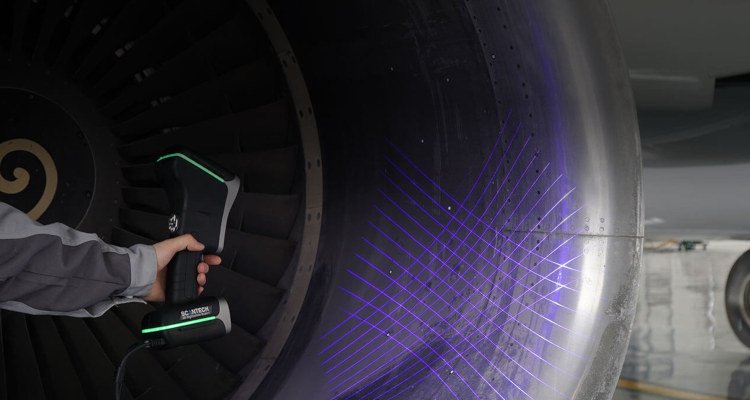
Pros
Can scan massive objects, such as plane parts as well as intricate, small objects.
Features both infrared lasers and blue laser technologies, which allows it to accomplish a wide range of scanning functions.
Cons
The software will take time to get used to.
The software will take time to get used to.
Esteemed 3D scanner company Scantech have announced the launch of their latest KSCAN 3D scanner, with 5 five different modes for all types of scanning. These include a large area scanning mode, fast scanning mode, photogrammetry, as well as a fine scanning mode. Featuring both infrared lasers and blue laser technologies allows the KSCAN-Magic to accomplish a wide range of scanning functions effectively.
It scans accurately, quickly, can handle small and large objects, and is designed to accelerate time-to-market. The 41 equipped laser lines can handle an incredible 1.35 million measurements per second, creating detailed scans in record time.
If you are looking for leading-edge 3D solutions for your business, KSCAN definitely surpasses expectations with its resourcefulness and precision.
Buyer’s Guide – Factors To Consider When Buying A 3D Scanner
- Budget: 3D scanners cost from $300 to over $100,000. Entry-level scanners cost less than $1,000, but more robust machines for professional scanning sell for $5,000 and up. For more information, read our article on how much 3D scanners cost.
- Speed: 3D scanners record speed in points per second or frames per second (FPS). If you’re buying a professional 3D scanner, where productivity is critical, we recommend frame rates of around 20 FPS or higher.
- Resolution and Accuracy: For a budget 3D scanner, 0.1-0.2 mm is a solid reference point, while much more expensive industry scanners can reach accuracies of 0.009 mm. Though similar to accuracy, resolution refers to the smallest possible distance between points on a 3D scan.
- Use case: If you’re just looking to 3D scan objects to 3D print fun projects at home, you’ll just need an entry-level 3D scanner. If you want to scan larger models such as people, rooms, or other large objects, we recommend a handheld 3D scanner with a larger max scan volume. For small objects or jewelry scanning, pick a very accurate stationary 3D scanner, ideally with a turntable, tripod, and an optimized alignment algorithm.
Types of 3D Scanners
The main types of 3D scanners include:
- Laser triangulation 3D scanners
- Structured light 3D scanning
- Photogrammetry
- LIDAR (time-of-flight)
- Metrology 3D scanners
- Intraoral 3D scanners for dentistry
- 3D body scanners
The two most-used technologies are structured light scanning and laser triangulation.
Structured Light Scanning
Structured light scanning is often used in handheld 3D scanners. It works by projecting a pattern of light onto an object. This pattern is typically captured by two cameras positioned on either side of the light projector. These cameras record how the light pattern deforms when it strikes the surface of the object.
The key to structured light scanning lies in the measurement of these deformations. By analyzing the light pattern from multiple angles, and triangulating data points across the different images taken by each camera, you can precisely calculate the object’s dimensions at every point within their field of view.
This method is particularly valued for its portability and accuracy, making it a popular choice in various applications. For example, in dentistry, structured light scanning is used to create detailed models of patients’ mouths for the production of dental implants and other prosthetics.
The technique has also found use in fields beyond healthcare. Architects and historians use structured light scanning to create digital archives of historical monuments, and space exploration agencies like NASA use it for mapping terrains of other planets for interplanetary research.
However, structured light scanning does have its limitations, particularly in its sensitivity to ambient lighting conditions. Since it relies on projecting and measuring light patterns, external light sources can affect the accuracy of the scan. This makes it less effective in outdoor environments, or other settings where the lighting conditions can vary.
Laser Triangulation
Laser triangulation involves projecting a laser beam onto an object’s surface and then using sensors to detect the reflected light from the laser. These sensors are positioned at a known angle and distance from the laser source and detect the light reflected.
When the laser light reflects off the object, the sensors capture the reflection at a specific angle. The scanner then determines the distance between the scanner and various points on the object’s surface using trigonometry. This data is then used to reconstruct the 3D shape of the object, including textures and surface features.
However, there are some limitations to laser triangulation. Laser scanners can struggle with shiny or reflective surfaces, as they can scatter or reflect the laser beam in unpredictable ways, leading to inaccuracies in the data. Transparent materials also create issues because they do not reflect the laser light effectively, making it difficult to capture accurate measurements.
For these reasons, laser triangulation is often less accurate and does not offer as high resolution as structured light scanning. Structured light scanning also generally scans objects with less noise (unwanted extras in the scan).
LiDAR (Light Detection and Ranging) 3D Scanning:
LiDAR technology is used in advanced applications, and the latest iPhone 15 Pro and 15 Pro Max include LiDAR sensors. It works by emitting laser beams towards an object or surface and then measuring the time it takes for each beam to bounce back to the sensor.
This time measurement, combined with the speed of light, lets the LiDAR system calculate the distance to various points on the object or surface, which is used to create the point cloud for a 3D model.
LiDAR is particularly effective for capturing large-scale environments. It’s widely used for topographical mapping, forestry, and urban planning, as well as in autonomous vehicle technology for real-time navigation and obstacle detection.
Time of Flight (ToF) 3D Scanning:
Time of Flight (sometimes called ToF) 3D scanning is a broader category that includes LiDAR, but also encompasses other 3D scanning technologies.
While LiDAR is specifically emitting lasers, ToF scanners can use various kinds of light sources and are not limited to lasers.
Handheld 3D Scanners
Portable and versatile by design, handheld scanners allow you to efficiently and freely scan large objects, narrow spaces, or all the details of a human subject, for example.
Stationary 3D Scanners
Fixed scanners are a solid option if you plan to scan small objects and want the device to do most of the heavy lifting. They generally come with a stand or tripod and turntable. Automated scanning is also typically part of the deal here, with different modes of alignment to choose from.
3D Body Scanners
3D body scanners are specialized devices designed to capture a complete 3D representation of the human body. They’re used in various fields, such as:
- Health and Fitness: 3D body scanners are used for body shape analysis, posture assessment, and tracking changes in the body over time.
- Fashion and Apparel: These scanners are used in custom clothing design, ensuring a perfect fit by capturing accurate body measurements.
- Entertainment and Animation: 3D body scanners are used to create lifelike digital doubles for use in movies, video games, and VR.
These scanners work by using different scanning technologies, such as structured light scanning, laser scanning, or photogrammetry, to capture the shape and size of the body from multiple angles. The data collected is then processed to create a detailed 3D model of the body.
What’s Changed?
The first edition of our best 3D scanner buyer’s guide was published back in 2018. Since then, we’ve kept this article updated for over 5 years with our latest recommendations.
In November 2023 we overhauled this article with the following changes:
- We replaced the Revopoint POP 2 with the POP 3. However, we still recommend the POP 2 as a budget option.
- We removed the SOL 3D scanner, and EinScan SE. The Einstar, and the Revopoint POP 3, perform most of their uses but at a cheaper price.
- Removed the BQ Ciclop. It’s been a great run for this DIY 3D scanner, but over the last 5 years it has become outdated.
- Added the Creality CR-Scan Ferret. It’s a great super cheap 3D scanner under $350.
- Added the Shining 3D Einstar. It’s one of the best 3D scanners under $1,000 and a top pick for us.
- Replaced the Shining 3D EinScan Pro 2X with the newer EinScan Pro HD
Jan 2024 updates:
- We updated pricing information across the site now in 2024.

